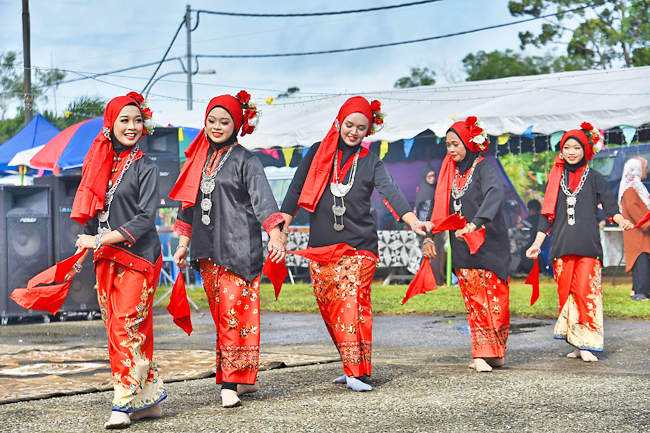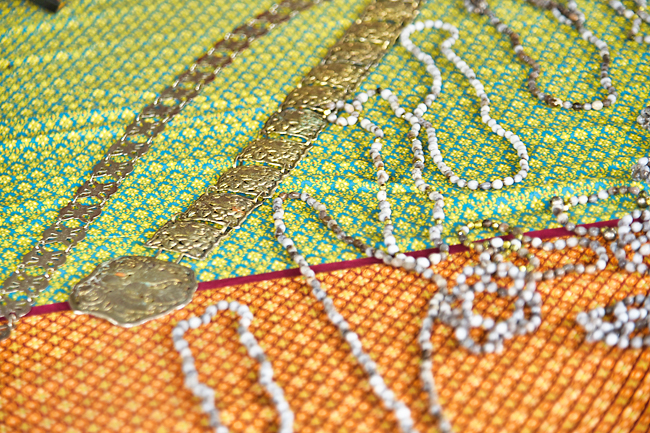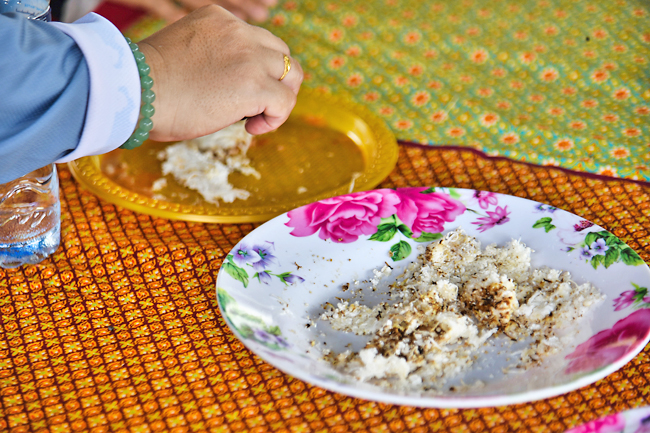Widely recognised as the seven puak jati of Brunei, the seven ethnic groups of the Sultanate each have their own unique origins, histories, cultures and traditions, all of which have been passed down through generations.
One of puak jati – the puak Kedayan – is found in Brunei and across Borneo Island.
The rich culture and traditions of this puak are prevalent throughout the region, actively practiced and proudly showcased to this day.
One of the standout initiatives to promote ongoing cultural practices was the Belait District Cultural Festival, held at the scenic Kampong Sungai Mau Recreational Park. Organised by the Kampong Sungai Mau Village Consultative Council, this vibrant two-day festival brought together groups from various indigenous backgrounds.
They showcased their rich traditions and heritage through songs, dances and cultural activities that have been cherished and passed down through generations.
One such group invited to showcase the effervescent Kedayan traditions – including song, dance and the intricate clothing and accessories worn during these festivals – was the Limbai Sadaman group from Kampung Belipat, Lawas, Sarawak.
I had the privilege of meeting with the group to delve deeper into Kedayan culture and heritage. The head of the group, Jun Sadiman, shared the significance behind their name.
“The group’s name, Limbai Sadaman, is a blend of two elements: Limbai, meaning dance routine, and sadaman, a traditional musical instrument made from wooden strips, integral to Kedayan culture.”





Jun also highlighted the unique traditional performances they brought to the festival, each vividly showcasing Kedayan heritage.
“We performed two traditional routines during the festival, one of which is Jipin Indung Anak, accompanied by traditional Kedayan instruments and singing,” Jun explained.
Another unique Kedayan performance showcased was Joget Tempurung, referred to in Kedayan language as Joget Tempung.
“Joget Tempung uses tempurung kelapa (coconut shells) as instruments. By striking two halves of a coconut together, we create a rhythmic beat,” he added.
Jun also mentioned that Tempung plays a significant role in many Kedayan sports and games, such as kuit. This game involves a hollowed-out tempurung kelapa with a hole on top and is typically played during festive seasons and celebrations like weddings, highlighting a unique aspect of Kedayan heritage.
Additionally, the group showcased various mouth-watering Kedayan cuisines, including kuih sakol.
“Kuih sakol is made from three basic ingredients: sago from ambulong, finely dried coconut flesh, and sugar. These ingredients are combined in a hot kuali (wok) and cooked without adding oil until slightly golden,” Jun detailed.
Additionally, the base for kuih sakol can be adapted to make other traditional delicacies, such as kuih rangin, which is baked, and kuih dangai, which is similar to kuih sakol but with fillings like gula melaka (palm sugar).
Rosland bin Sisa, the village head of Kampung Belipat, who led the group during the festival, emphasised how kuih sakol is traditionally a hearty meal.
“Kuih sakol is quite filling; once eaten, you won’t feel hungry for nearly the whole day or sometimes even two days,” he explained.
Another unique tradition showcased at the festival was the various accessories worn by the Kedayan, many of which are made from buah hanjeli. Known in English as Job’s Tear or by its scientific name Coix lacryma-jobi, this plant is native to Southeast Asia. Its hard-shelled seeds are used to make beads, which are then crafted into accessories such as necklaces, bracelets, rings, and more.
Rosland hopes that despite their geographic distance, the group’s participation in the festival successfully shared and celebrated the rich Kedayan culture and heritage.
He also aimed to strengthen ties with other ethnic groups in Brunei.
Furthermore, he hopes that their visit has inspired others to showcase their own cultures and heritage, as the festival has done, fostering a greater appreciation for the diverse traditions among the nation’s ethnic groups.
With their rich traditions deeply rooted in the nation’s history and beyond, festivals like the one held at Kampong Sungai Mau and similar initiatives are crucial for passing this heritage down to future generations. – Daniel Lim





